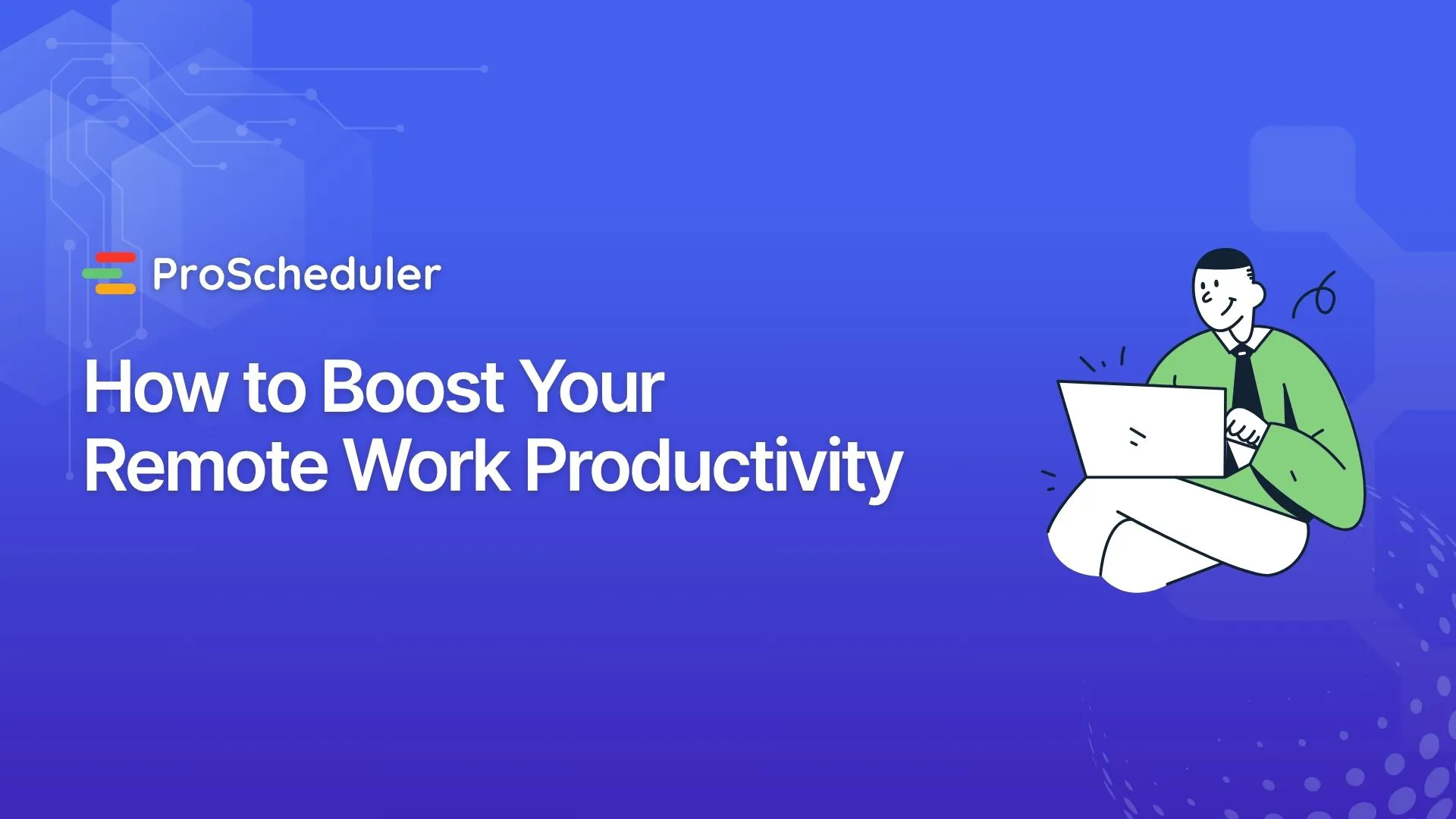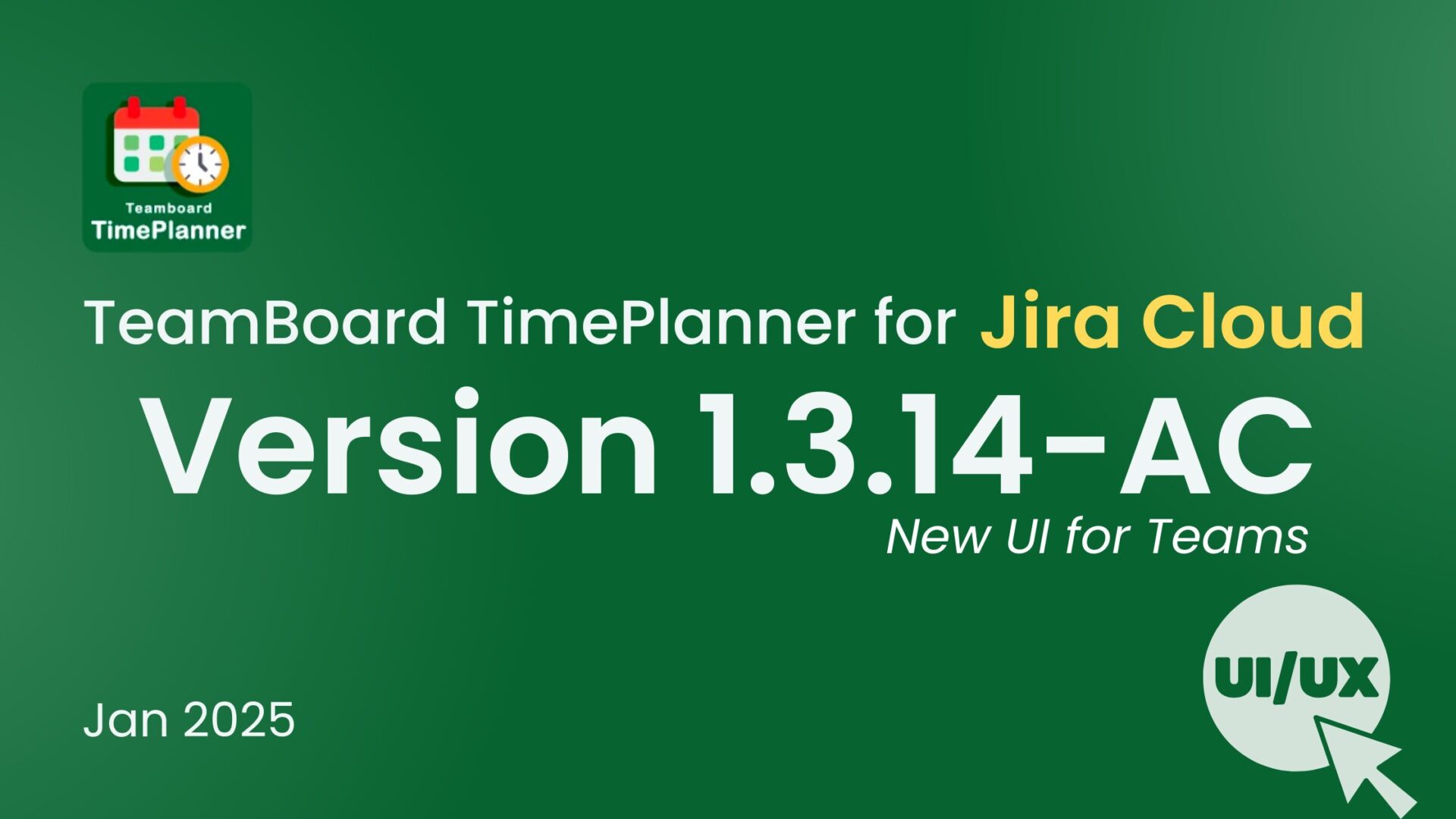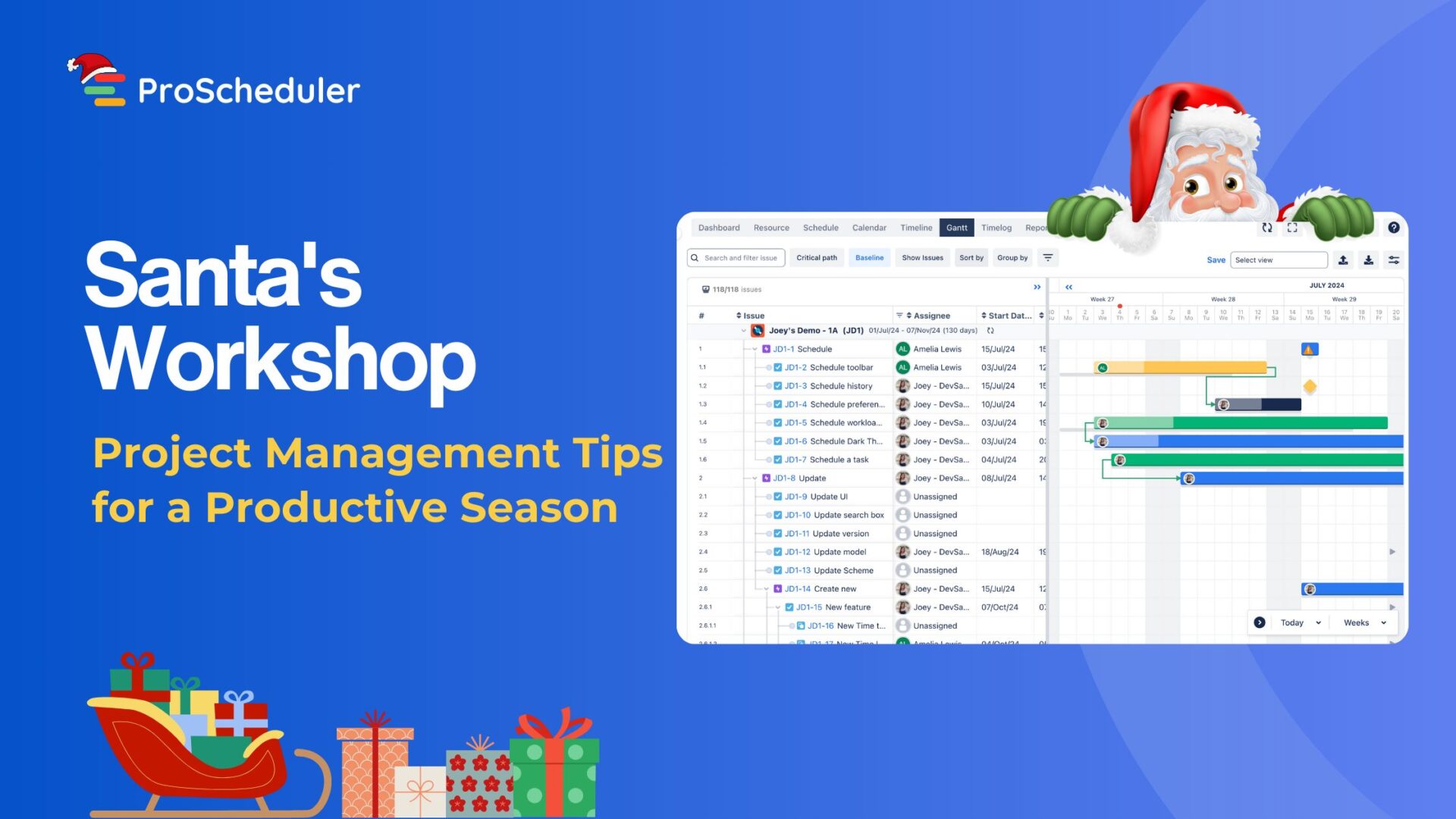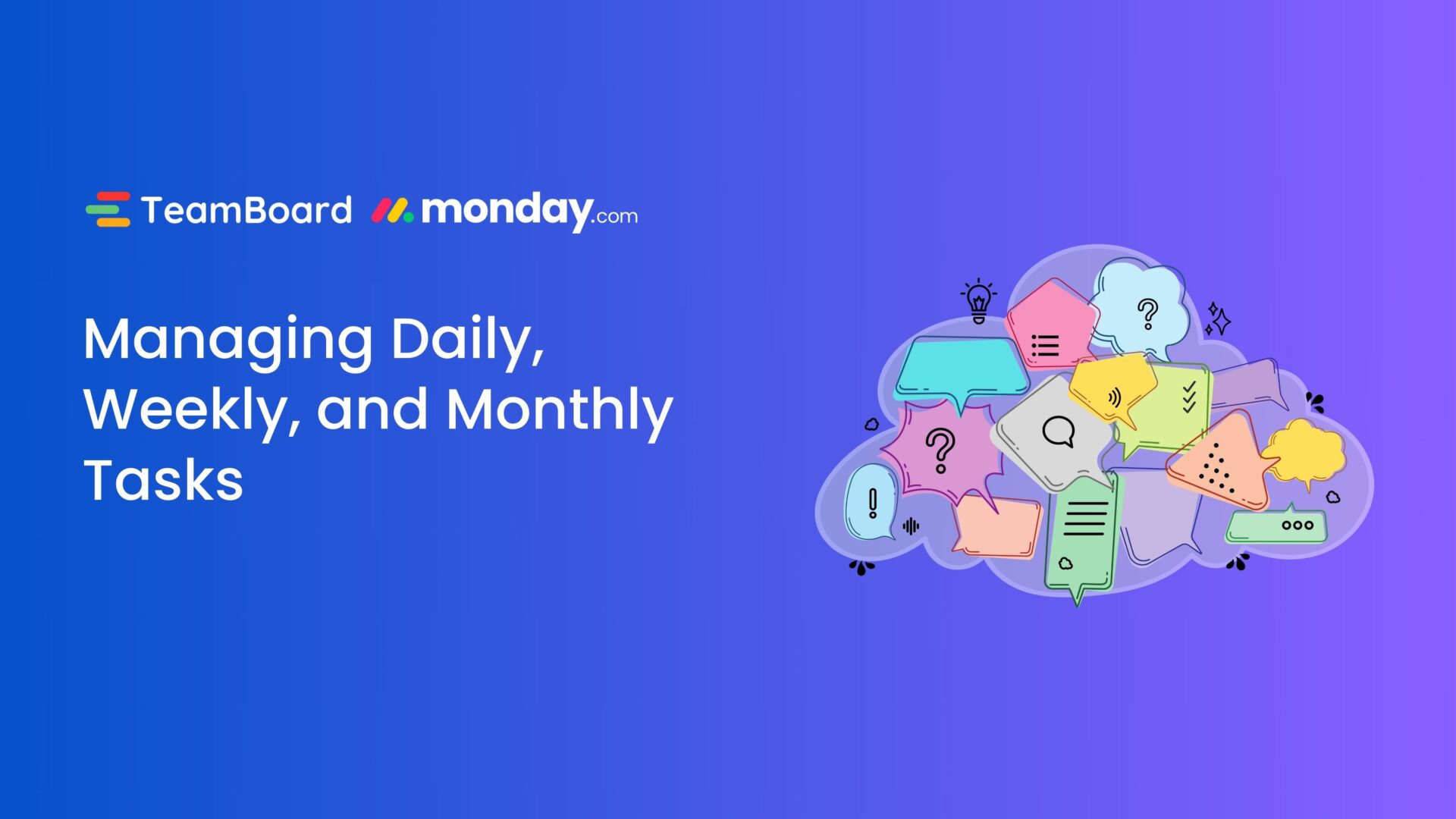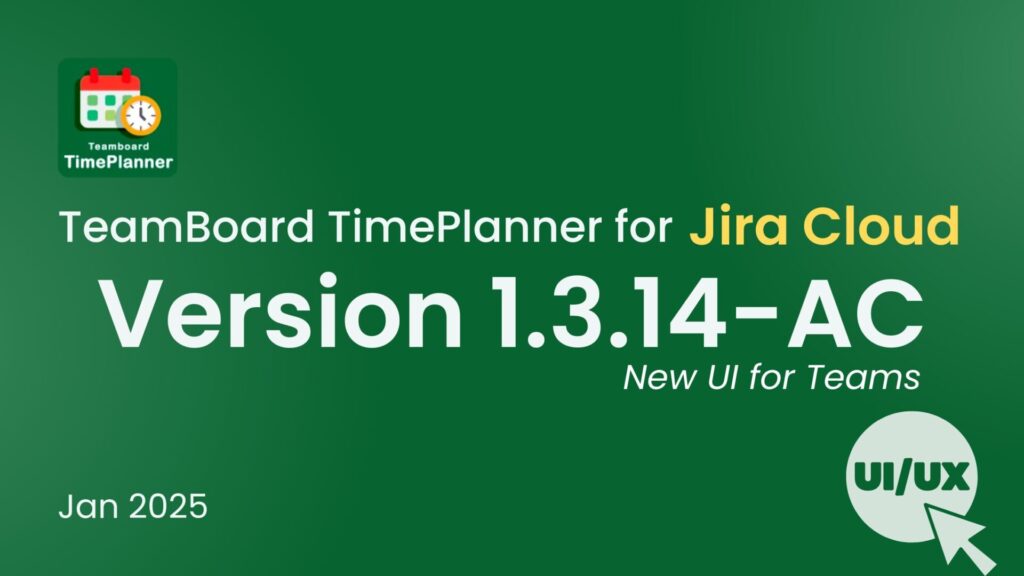Efficient time management is the key to team productivity, cost control, and project success. That’s why time tracking and planning tools have become essential in helping teams stay on track and meet deadlines (and stay away from burning out, too).
Among the numerous options available, TeamBoard TimePlanner and TimeSheets by Tempo stand out as two highly regarded solutions that offer robust time tracking and management features. However, when comparing TimePlanner vs. Timesheets, they cater to different types of users and business needs.
In this article, we’ll compare TimePlanner and TimeSheets across various key factors, helping you determine which tool suits your team or organization.
TimePlanner vs. Timesheets: An overview
Before diving into the comparison, let’s briefly introduce both tools.
1. About TeamBoard TimePlanner by DevSamurai
TeamBoard TimePlanner is a Jira-native tool focused on visual time tracking, timesheet reporting, and resource planning. It is designed for teams looking for a visual and flexible way to analyze workload and availability effectively with streamlined leave approval workflows.
Additionally, the tool allows you to manage client profiles, track billable hours, and create detailed reports for accurate financial analysis. TeamBoard TimePlanner is perfect for teams needing a comprehensive planning tool that can go beyond simple time tracking.
2. About Timesheets by Tempo
On the other hand, TimeSheets by Tempo is a time tracking tool designed primarily for teams working within the Jira ecosystem. It helps automate time tracking and provides detailed reporting capabilities.
TimeSheets also aims at teams that require an efficient way to track time spent on tasks, projects, and billable hours, especially those in industries like software development and project management.
TimePlanner vs. Timesheets: Pros and Cons
|
|
TimePlanner by DevSamurai |
Timesheets by Tempo |
|---|---|---|
|
Pros |
|
|
|
Cons |
|
|
TimePlanner vs. Timesheets: Detailed comparison
Now we’ve come to the main part of this article, comparing key factors between the two tools and seeing how TimePlanner and Timesheets by Tempo stand against each other.
1. App interface (UI)
TimePlanner has a more intuitive and user-friendly interface, leveraging drag-and-drop ability to make task planning and time tracking straightforward. Besides, its visual nature makes it easier for teams to track project progress at a glance.

Meanwhile, in Timesheets by Tempo, the app is also easy to use for those already familiar with Jira. However, it may require some learning to fully navigate its features, especially for new users.
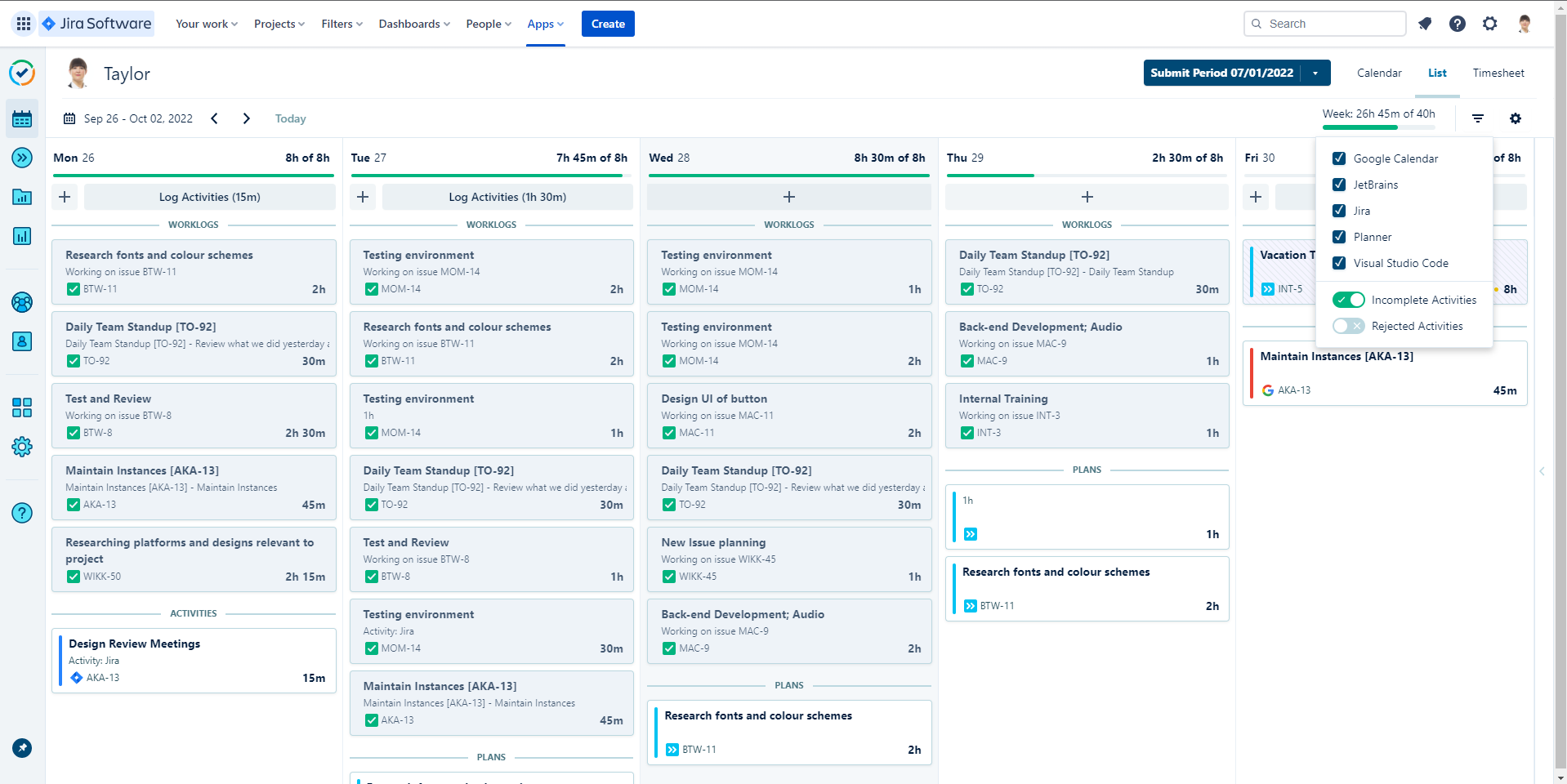
2. Time tracking ability
Next, we shall compare the time tracking features between the two apps. TimePlanner provides a time tracking ability that works not just for yourself, but for everyone in your team. You can schedule existing tasks or plan new ones, assign members to handle those tasks directly, and adjust the time needed to complete them. All happens on the same board.
![]()
With Timesheets, you can also plan current tasks or create new ones, but that only works for you. In other words, each team member is responsible for scheduling their own tasks.
![]()
3. Resource (or Workload) management
With TimePlanner by DevSamurai, you can not only manage task planning but also visualize the workload of each member, which is shown as the length of the tasks and highlighted dates if overloaded.
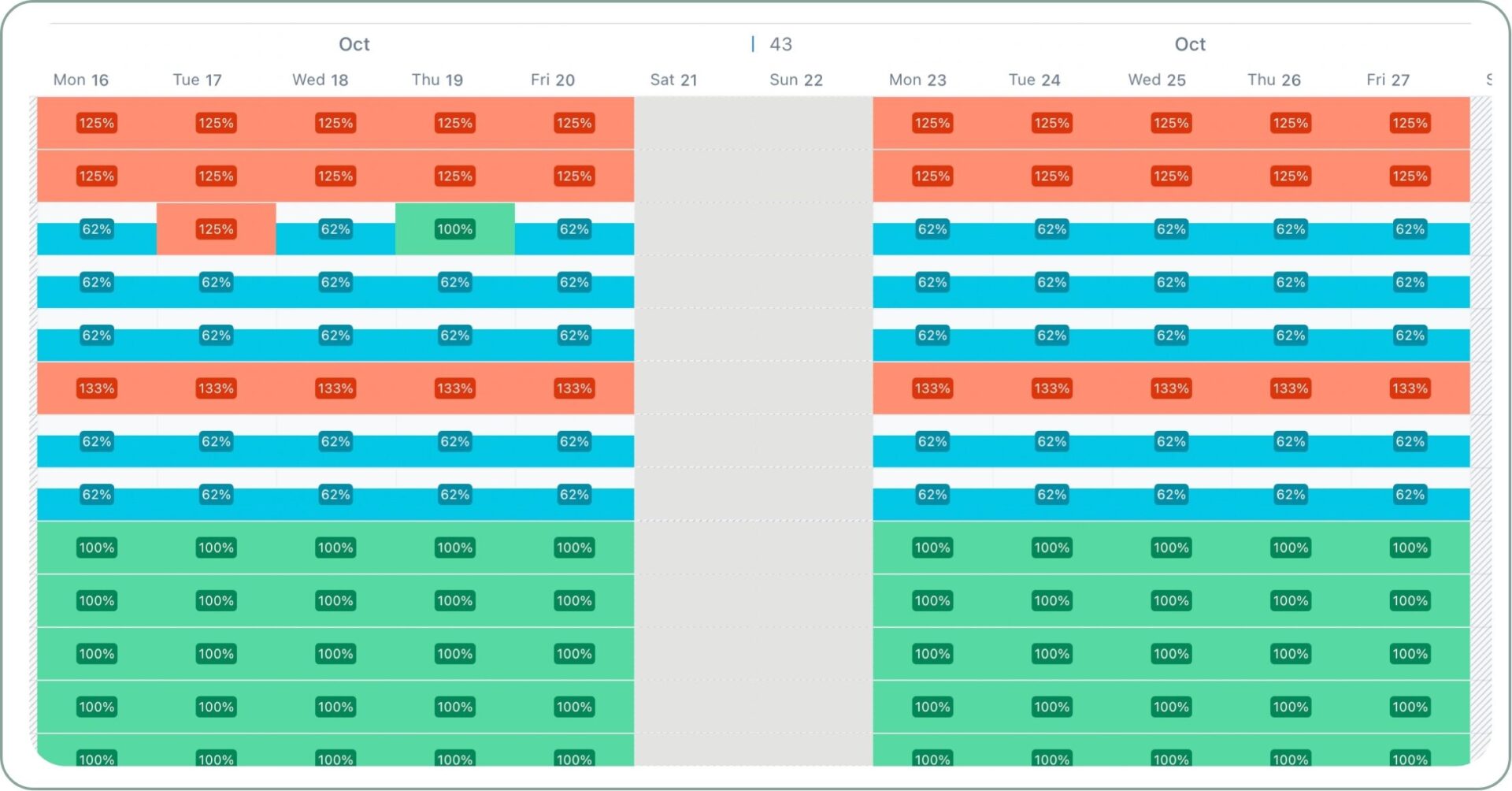
Not only that, you can get much deeper and comprehensive workload insights of all members with just a click. As a result, teams can see at a glance who is working on what, and if someone is being overburdened or underutilized, allowing adjustments to be made easily.
For Timesheets, you can also view the number of hours worked on the calendar, similar to TimePlanner, but it is not as comprehensive. Besides, there is no workload insight to help you get a quick overview of your member’s current workload.
4. Billing management
Both TimePlanner and Timesheets support tracking and classifying billable and non-billable hours directly. This empowers users to analyze and assign hourly rates to projects, tasks, or members effectively.
However, TimePlanner does it better by offering the ability to set billing rates right within the app. As a result, managers or leaders can monitor and control project expenses with precise financial oversight.
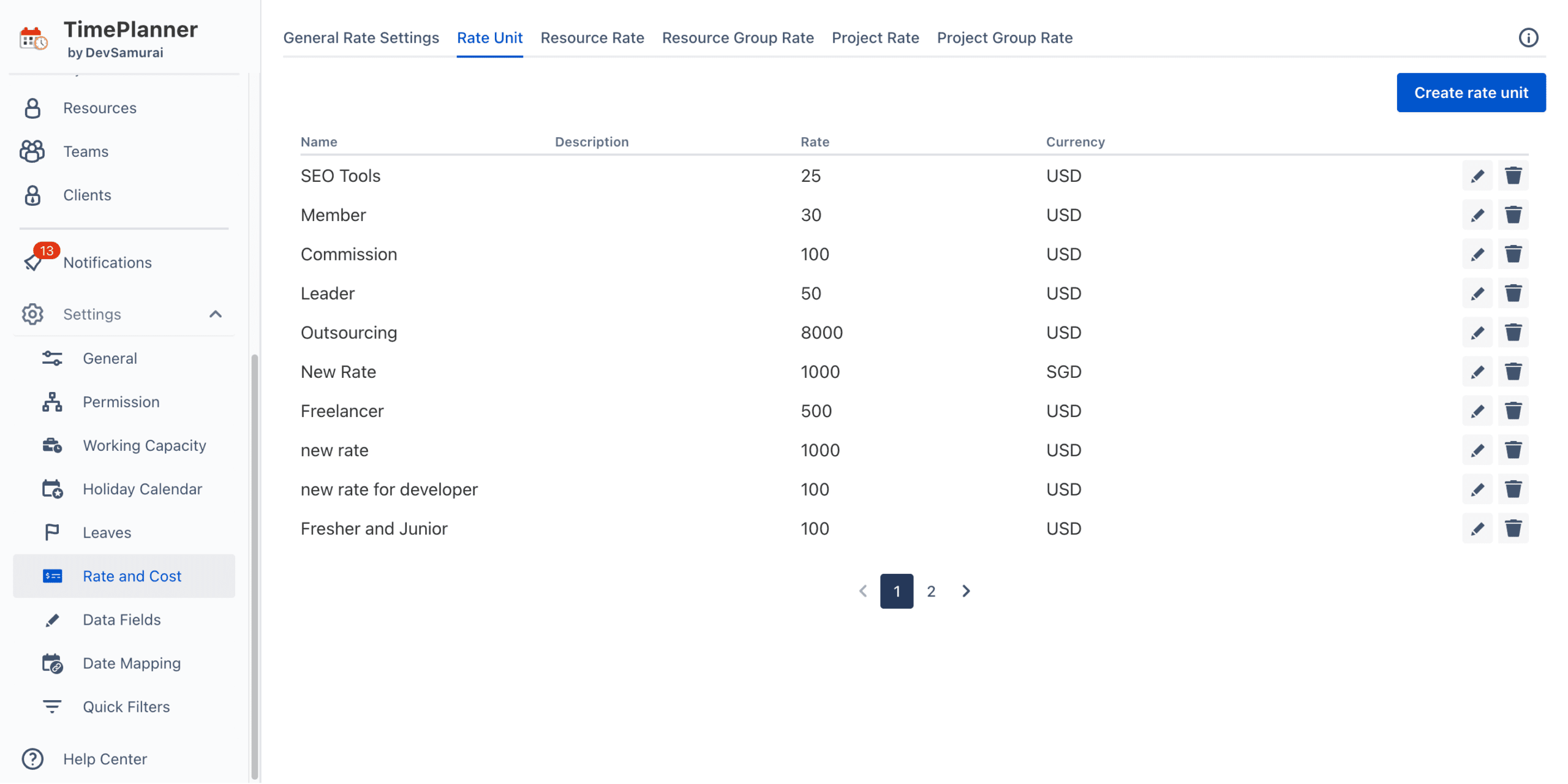
5. Customizations and Reports
When it comes to customizations, TimePlanner has the upper hand. The app provides a highly customizable dashboard that you can freely adjust to suit your needs, including Overtime, Workload, Utilization, Project time, and more.
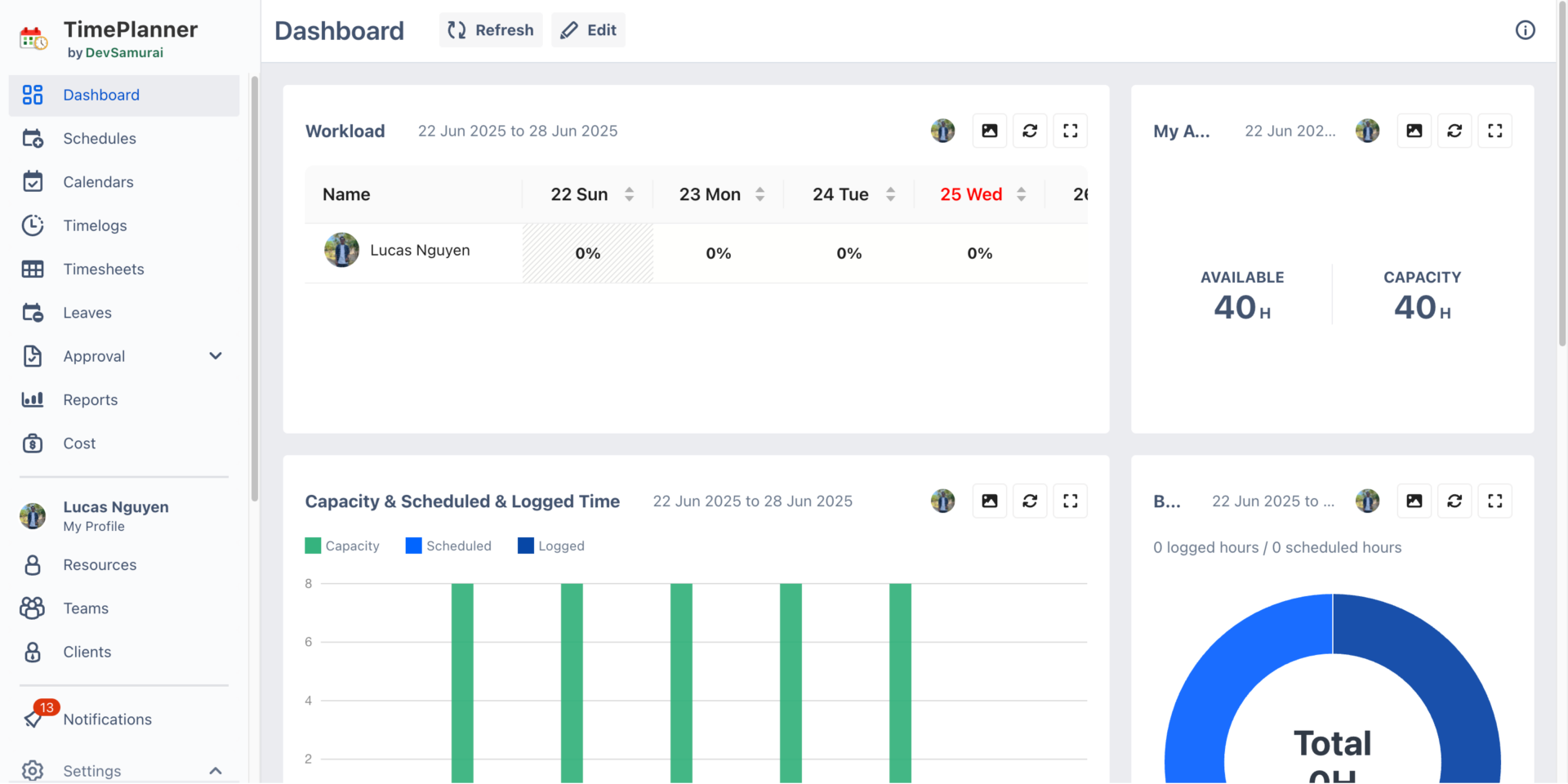
Meanwhile, Timesheets only offers a fixed dashboard layout where you can keep track of the basic metrics in time tracking.
For reporting capability, both apps stand side-by-side by offering detailed reports. But once again, TimePlanner excels by providing reports based on individual members or teams with capacity and overtime tracking.

6. Integrations
With TimePlanner, you can export your scheduled tasks or events as ICS files, which can be imported into external calendars like Google Calendar, Apple Calendar, and Microsoft Outlook.
However, this is where Timesheets by Tempo shines. Besides the ability to link to Google and Microsoft calendars, the app can also integrate with other platforms such as Jira Align, Slack, JetBrain, and VS Code. Therefore, users can effortlessly track working hours and log time across different workspaces.

7. Price comparison: TimePlanner vs. Timesheets
Last but not least, let’s take a closer look at the price of these apps to see which one brings better value to the table.
TimePlanner:
- Free for teams under 10 users.
- Pricing for different user tiers starts from $1.50 per user/month (which means a 50-user team will cost $75/month and $750/year).
Timesheets:
- Free for teams under 10 users.
- Pricing for different user tiers starts from $4.53 per user/month (which means a 50-user team will cost $226.50/month and $2,265/year).
TimePlanner vs. TimeSheets: Which tool is better?
The choice between TeamBoard TimePlanner and TimeSheets by Tempo ultimately depends on your team’s needs and existing systems.
You should go for TimePlanner if:
- Your teams are looking for a flexible, visual project planning tool with resource management capabilities.
- Prefer a customizable dashboard for a complete overview.
- Need a billable hour tracking ability with detailed billing rates.
- Want detailed reporting capabilities with actual and scheduled costs.
On the other hand, you should go for Timesheets by Tempo if:
- You prefer automated time tracking.
- You’re looking for a tool with extensive integrations with other platforms.
What makes TimePlanner excel?
While TimePlanner is a solid tool for resource capacity planning and resource management, it also offers some unique features that truly set it apart.
1. Event and vacation planning
In addition to leave approval workflows, TimePlanner supports event and vacation planning. This feature allows teams to plan vacations and events well in advance, ensuring proper resource allocation during peak periods.
TimePlanner’s Schedules board makes it easy to see who is available and when, so managers can better plan team schedules and project timelines, minimizing disruptions during key project phases.
2. More accurate timelogs with Stopwatch Timer
TimePlanner also provides a more accurate time tracking method with its stopwatch timer. More than just manual time logging, the stopwatch timer allows team members to start and stop a timer whenever they begin or finish a task.
As a result, this ensures that time logs are as accurate as possible, eliminating the risk of human error and providing a detailed breakdown of how much time is spent on specific tasks. So, whether your team handles billable hours or simply tracks productivity, the stopwatch feature helps maintain precise records of work hours.
3. Leave approval workflows
One of the standout features of TimePlanner is its leave approval workflows. This functionality allows teams to seamlessly manage employee time off requests, whether it’s vacation, sick leave, or personal days.
Managers can easily review, approve, or reject leave requests directly within the platform, streamlining HR processes and ensuring no project timelines are negatively impacted by unapproved absences.
Final verdict
So, that’s all about comparing TimePlanner vs. Timesheets by Tempo. When deciding between the two, it depends on your team’s needs, existing tools, and preferred way of managing time.
If you’re looking for a more well-rounded time tracking tool that offers a user-friendly interface, holiday planning, and accurate work hour logging, TimePlanner is the perfect option. Besides, the app goes beyond a time tracker for Jira by providing streamlined approval workflows, billable hours with detailed billing rates, and insightful capacity planning.
On the other hand, if what you want is a tool that can track time precisely and that deeply integrates with Jira, Timesheets might be the right choice. Additionally, it also has wider integration capabilities with other platforms, making Timesheets a good contender.
Both tools are effective in their own right. But if you want to get the bang for your buck, TimePlanner by DevSamurai will definitely satisfy your needs.



